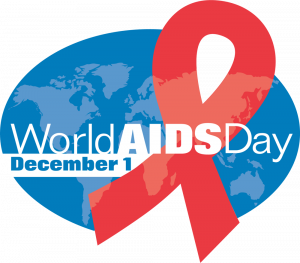
Saving Lives through Leadership and Partnerships
Each year the world takes notice of AIDS and its impact upon individuals and society. This year, the 30th anniversary, the theme is Saving Lives through Leadership and Partnerships. This theme is inclusive of the entire global population – we can all partner to help end this life-altering disease.
HIV/AIDS
HIV, or human immunodeficiency virus, is the actual virus that causes the illness AIDS. AIDS stands for acquired immunodeficiency syndrome, the illness people experience due to the virus. They are not the same thing, but you can’t have the disease without exposure to the virus.
When the AIDS crisis first made headlines, people feared they would contract the illness merely by being near an infected individual. Thankfully, through research, we understand that the virus does not work that way. Here’s what we have learned in the last three decades.
- HIV (the virus) is spread via contact with another person’s bodily fluid such as semen, blood, vaginal/rectal fluids, and breast milk. This fluids, when in contact with mucous membranes such as a mouth or vagina, are absorbed into our bodies. HIV can also be spread through shared needle use, which is a problem with the opiod epidemic we are experiencing now.
- You cannot get HIV from kissing, holding hands, or using a shared bathroom. Little flying vectors (you know, biting bugs like mosquitos) will not spread the disease.
- The number of deaths from the disease as well as the number of new diagnoses is decreasing. However, almost 16 million people died from the disease in 2017.
- We now have antiviral treatment (ART) called PEP to help prevent AIDS if one has unprotected sex. Also, if an individual is at high risk, such as men who have sex with men, there is a prophylatic medication (PrEP) available to help decrease the risk of infection.
- Always use condoms.
- There is a stigma related to sexually transmitted infections and HIV/AIDS which prevent individuals from getting tested and treated for the disease. Open, non-judgmental conversation about this issue will break these boundaries of shame, allowing for a reduction in the spread of disease. About 15% of indivuduals with the virus in 2017 were unaware they were infected with the virus.
To read more stats and facts read World AIDS Day 2018: 30 questions about HIV/AIDS, answered, for 30 years of World AIDS Day in USAToday. (This article was the resource for this information.)

Caregivers and Organizations Need Support
But there is another side to the HIV/AIDS story. These are the people who work tirelessly to educate, treat, and care for those living with the HIV/AIDS: Infectious disease professionals. Many volunteer their time or are underpaid for their important work.
What can we do? Donate.
As the theme for this year’s World AIDS Day indicates, it is paramount to partner with the leaders in research, education, and care for this disease.
Funding for research, education, and support is crucial. Here are some great non-profit options deserving of our support.
For more information, go to this article by the NIH and this article by hiv.gov. Read more here as well.
Make time to talk to your young person or other loved ones about getting tested for HIV and other STIs. To find out where to get tested, click here.
Start the conversation about sexual safety with your young person. Then donate to an HIV/AIDS orgization together.

